06/12/2020
Pardon the redundancy…
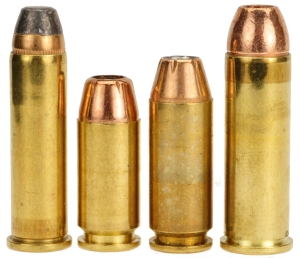
This issue of 10mm Automatic power was addressed on Part I, but the comparison was to large bore magnum cartridges. Now that we know the 10mm Automatic pales in performance, kinetic energy wise, to the 50 BMG, the table below may provide more reasonable associations and context.
| Cartridge | Bullet Weight Grains |
MAP KPSI |
Typical* Factory FPS |
Muzzle Energy Ft.-Lbs |
SAAMI Barrel Length “ |
| 357 Magnum | 180 | 35.0 | 1145 | 524 | 5.6 |
| 40 Smith&Wesson | 180 | 35.0 | 1015 | 412 | 4.0 |
| 10 Automatic | 180 | 37.5 | 1250 | 625 | 5.0 |
| 41 Remington Magnum | 180 | 36.0 | 1520 | 924 | 5.8 |
| *Typical cross manufacturer standard ammunition velocity | |||||
Cherry picking loads could bump up the performance of factory 10mm Auto ammunition and bump down the performance of the 41 Rem Mag, but the data on the table reflects typical performance. The 41 Magnum produces approximately 22% greater velocity than the 10mm Automatic and approximately 48% greater kinetic energy at the muzzle. This in no way suggests that the 10mm Auto is under powered for medium size game, but rather just that it is not as powerful as the 41 Magnum.
What have I been up to? Glad you asked.
Let me begin by saying the Remington 1911 R1 10mm Hunter was tons of fun to shoot. The long barrel yielded an excellent sight radius for accurate longer range shooting and the heft reduced 10mm Auto recoil to a comfortable level.
The sights are solid and stay put in adjustment. The trigger is crisp, light brief in required effort. It is the type of pistol that made John Browning memorable and one that speaks to 100 plus years of world history in a not too different package.
During all of the shooting, all of the variations of ammunition passed through it, the 1911 R1 10mm Hunter barked and cycled without hesitation, misfire or incomplete cycling. By the same token, it locked open on empty, awaiting a fresh mag, and the slide was relatively easy to rack even for an old guy.
Creating problems where none exist..
The data appearing on the table below is an addition to the jacketed and other cast bullet loads appearing in the Real Guns 10mm Auto in the handload section. All of those loads were also shot with a Remington 1911 R1 10mm Hunter. In regard to the hard cast loads below, they may not offer the expansion afforded jacketed lead core bullets. Additionally, cast bullets may render long term wheel weight bullet casters a bit loopy… and cast lead bullets may require extra effort in bore scrubbing to get that gunk out of the barrel after shooting. Then, of course, , they may be illegal in most U.S. states currently under communist leadership, however… yes, there is a “however”, they penetrate deeply and will break bones to disable or get to internal organs. They are also quite accurate.
How do I know? Because I know for a fact that even a large piggy, heart or lung shot, will not laugh at a 10mm Auto shooter and spit the bullet out of his mouth before running off. Yes, that is an incorrect paragraph break, as it is a continuation of the same throught and not a new thought. Still, I get tired reading a very long paragraph, so I made what I would call a paragraph for the sake of grammatical aesthetics.
Above, Left to right, hard cast: HiTek coated Acme 180 grain FP, Acme 200 grain FP, DoubleTap 230 grain WFNGC. The DoubleTap is actually a bullet for a revolver cartridge as subtly suggested by the roll crimp groove forward of the driving bands. The 10mm Auto cartridge headspaces on its case mouth with the bullet secured with a tapered crimp.
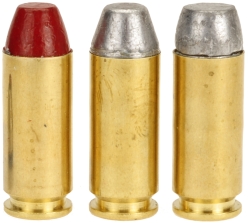
The turtle conundrum and other tales of woe…
I had two 180 grain cast bullets from Acme Bullets on the shelf. The HiTek coated bullet has a gradual, rounded ogive and a short shank. The bare cast, lubed 180 grain bullet has a longer shank with a stubby, sharply tapered ogive and just about the same overall length as the coated bullet. Currently, Acme lists a revised coated bullet with the same profile as the bare cast bullet… and they have discontinued the very excellent bare cast 180 grain bullet. Life can be complicated.
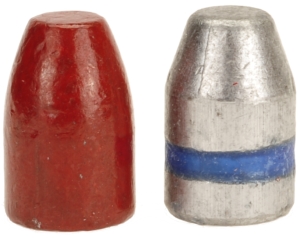 The Hornady bullet comparator does not have a 0.400″ bushing but the Hornady headspace gauge does and it can work for the same purpose. The early coated bullet has a 0.286″ shank that is groove diameter and the 180 grain plain hard cast, same as the current Acme coated 180 grain bullet, has a 0.379″ shank. Overall bullet length for both is 0.628″
The Hornady bullet comparator does not have a 0.400″ bushing but the Hornady headspace gauge does and it can work for the same purpose. The early coated bullet has a 0.286″ shank that is groove diameter and the 180 grain plain hard cast, same as the current Acme coated 180 grain bullet, has a 0.379″ shank. Overall bullet length for both is 0.628″
Set to an overall cartridge length of 1.260″, the plain cast worked with the same charges indicated for the coated 180 grain. Why? While the shank is longer, a portion of the shank protrudes above the case mouth when seated, so the increase in shank length does not directly interpret into a seating depth increase. Instead, the ogive is shorter and the angle from shank to ogive is more acute.
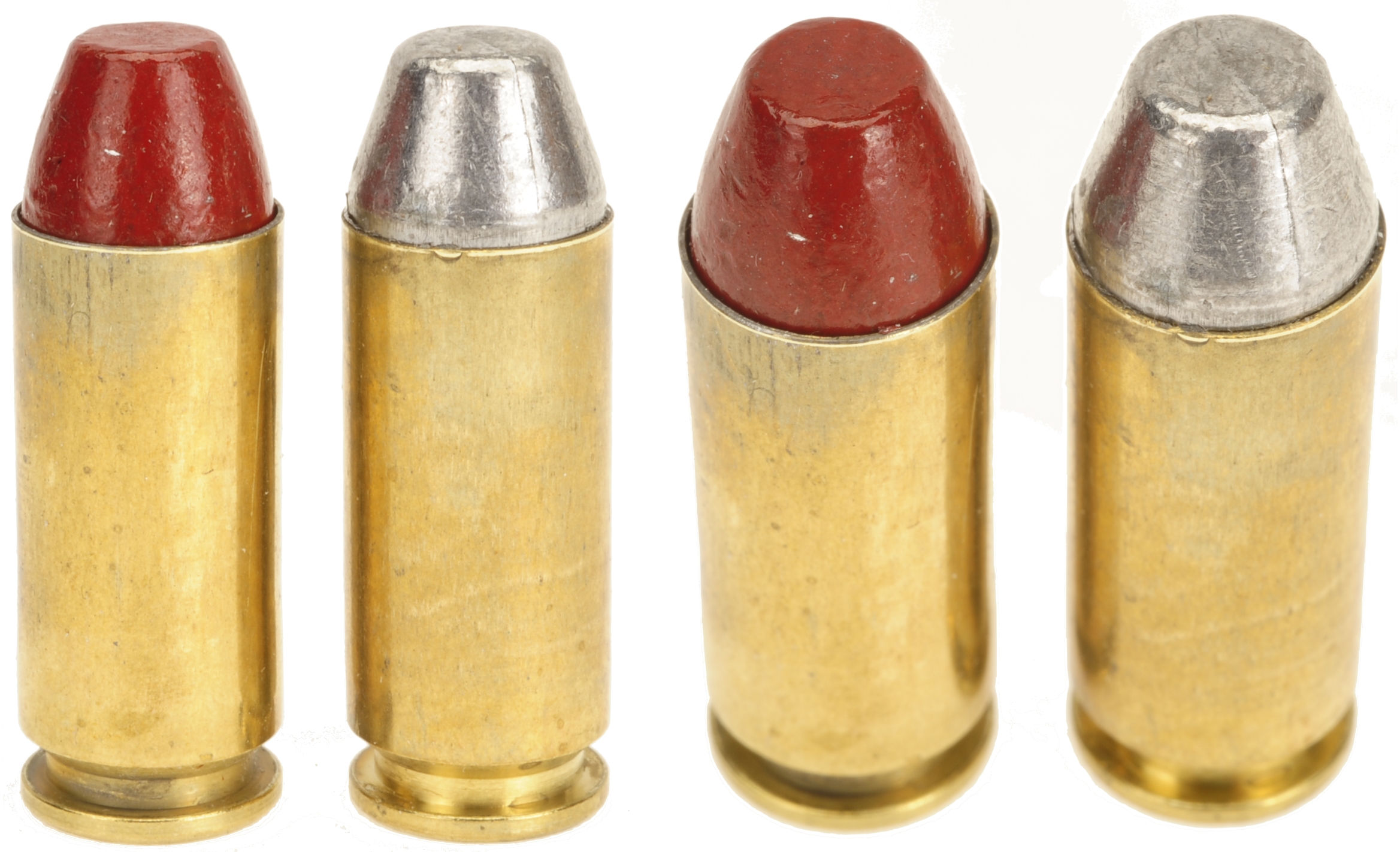
Above, the turtle as photographed. No, it is not bad enough to be confused with the 7.62x38mmR, but not as good a fit and function as the plain 180 grain bullet… or Acme Bullet’s current 180 grain coated bullet.
When is a 230 grain bullet not a 230 grain bullet?
DoubleTap has periodically offered the 230 grain bullets used in their 10mm Auto ammunition as component bullets. I have to say, in bulk supply, they are less than exciting. Besides the previously noted presence of a roll crimp groove, there was a substantial variation in weight, bullet to bullet, and a good number of bullets that had shed most of their lube.
| Listed Weight Vs Actual Weight | |||
| Bullet | 180 Grain |
200 Grain |
230 Grain |
| 1 | 179.9 | 199.7 | 225.9 |
| 2 | 177.4 | 200.5 | 226.7 |
| 3 | 179.2 | 200.3 | 226.3 |
| 4 | 180.2 | 200.3 | 226.2 |
| 5 | 180.2 | 199.9 | 228.5 |
| 6 | 179.6 | 200.0 | 226.2 |
| 7 | 180.1 | 200.3 | 226.0 |
| 8 | 179.1 | 200.4 | 226.5 |
| 9 | 179.8 | 200.6 | 226.5 |
| 10 | 179.2 | 200.4 | 228.1 |
| Range Grains |
2.8 |
0.9 |
2.6 |
| Grains Deviation From Listed Weight |
2.6 |
0.3 |
4.1 |
| Max PSI Bullet Weight Influence |
405 |
46 |
605 |
So, Joe, why are you writing about turtles and anorexic bullets? Because they sort of work and I wanted to experiment and because it flags potential problems others might encounter and because most handloaders… not the same a production reloaders, love to obsess over minutia and find solution to problems they foist upon themselves.
I think if I were going to settle down with a heavyweight bullet, I would buy a mold… probably 220 grain, and return to casting my own. I haven’t set fire to my shop bench for some time, so the memories and sense of nostalgia is pulling me in. That aside, the 200 grain Acme bullet was pretty terrific and got along really well with the R1. For 13 cents per, a person could get in a lot of shooting, hunting and range, without spending a lot of money.
Ta-Da…
Warning: Bullet selections are specific, and loads are not valid with substitutions of different bullets of the same weight. Variations in bullet length will alter net case capacity, pressure and velocity. Primer selection is specific and primer types are not interchangeable. These are maximum loads in my firearms and may be excessive in others. All loads should be reduced by 5% as a starting point for development where cartridges have greater than 40 grains in capacity and 10% for cartridges with less than 40 grain capacity following safe handloading practices as represented in established mainstream reloading manuals. Presentation of these loads does not constitute a solicitation for their use, nor a recommendation.

| Cartridge: 10mm Automatic 37,500 PSI MAP |
|
| Firearm | Remington R1 Hunter |
| Barrel Length | 6.0″ |
| Min – Max Case Length | 0.992″ +0.0″/-0.010″ |
| Min – Max COL | 1.240″ – 1.260″ |
| Primer | CCI 300 – Large Pistol |
| Bullet Diameter | 0.4005″ +0.0″/-0.003″ |
| Reloading Dies | RCBS |
| Bullet Type | Bullet Weight Grains |
Net H2O Grains Capacity |
COL” | Powder Type | Powder Charge Grains |
Muzzle Velocity fps |
Muzzle Energy ft/lbs |
25 Yd 5 Shot Group” |
| Acme FN | 180 | 13.0 | 1.260 | AA 9 | 13.0 | 1264 | 639 | 1.2 |
| Acme FN | 180 | 13.0 | 1.266 | Alliant Blue Dot | 11.2 | 1408 | 793 | 1.6 |
| Acme FN | 180 | 13.0 | 1.260 | Long Shot | 9.4 | 1332 | 709 | 1.3 |
| Acme FN | 200 | 11.4 | 1.260 | AA 9 | 11.5 | 1193 | 632 | 1.2 |
| Acme FN | 200 | 11.4 | 1.260 | Alliant Blue Dot | 10.0 | 1323 | 778 | 1.5 |
| Acme FN | 200 | 11.4 | 1.260 | Long Shot | 8.3 | 1214 | 655 | 1.1 |
| DoubleTap | 230 | 9.2 | 1.240 | AA 9 | 10.0 | 1019 | 521* | 1.6 |
| DoubleTap | 230 | 9.2 | 1.240 | Alliant Blue Dot | 9.0 | 1187 | 707* | 1.9 |
| DoubleTap | 230 | 9.2 | 1.240 | Long Shot | 7.2 | 1098 | 605* | 2.0 |
| *Calculated with actual an average 226 grain bullet weight |
||||||||
I wanted to shoot 50 yard groups, but too much target was lost behind the front sight. If there was ever a good place to park a compact 3 MOA red dot sight, this would be a good choice. The 25 yard groups were shot from a rest, two hand grip, propped up with a shot filled leather bag.
What does this look like from a deer’s perspective?
| Best Zero Results – 200 grain Acme Cast | |||||||
| Near-Zero – yds. | 12 | Mid Range – yds. | 62 | ||||
| Far-Zero – yds. | 110 | Max Ordinate – in. | +3.0 | ||||
| Point Blank – yds. | 117 | ||||||
| Best Zero : Range 0 – 100 yards | ||||||||||||
| Yards | 0 | 10 | 20 | 30 | 40 | 50 | 60 | 70 | 80 | 90 | 100 | |
| Velocity – fps | 1323 | 1299 | 1276 | 1254 | 1232 | 1212 | 1192 | 1173 | 1155 | 1137 | 1121 | |
| Energy – ft.-lbs. | 777 | 749 | 723 | 698 | 674 | 652 | 630 | 610 | 592 | 574 | 558 | |
| Momentum – lbs-sec | 38 | 37 | 36 | 36 | 35 | 35 | 34 | 34 | 33 | 32 | 32 | |
| Path – in. | -1.50 | -0.22 | 0.85 | 1.70 | 2.34 | 2.75 | 2.92 | 2.84 | 2.51 | 1.93 | 1.07 | |
| Drift – in. | 0.00 | 0.00 | 0.00 | 0.00 | 0.00 | 0.00 | 0.00 | 0.00 | 0.00 | 0.00 | 0.00 | |
| Time Of Flight – sec. | 0.00 | 0.02 | 0.05 | 0.07 | 0.09 | 0.12 | 0.14 | 0.17 | 0.19 | 0.22 | 0.25 | |
The Remington 1911 R1 10mm Hunter has more than enough steam to drop medium size game, out to 100 yards, but preferably inside 50 yards. Considering pistol bullet tend to have a BC similar to sticking your hand out of a moving car window at 100 miles an hour, the combination is relatively flat shooting; point blank at 100+ yards. And how many hunting rifles can you carry on your hip?
Setting aside the deer hunting aspect, the 10mm Auto is a meaningful source of protection for anyone out walking trails or as a backup to a primary hunting firearm. And, yes of course, it is also a heck of a defensive firearm and quite manageable to shoot. A nice job done by Remington.

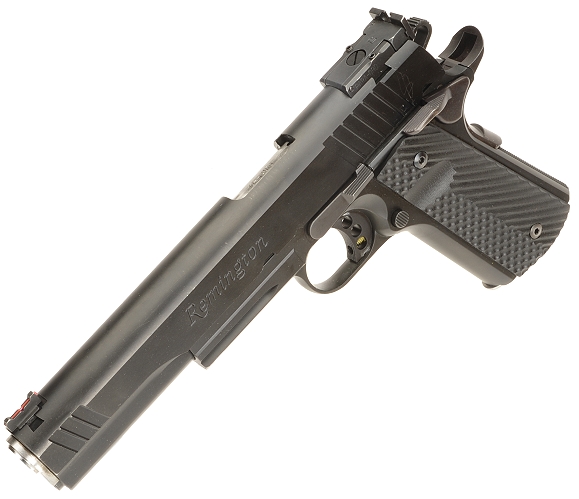
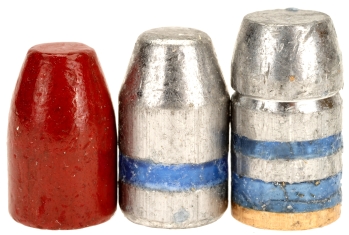

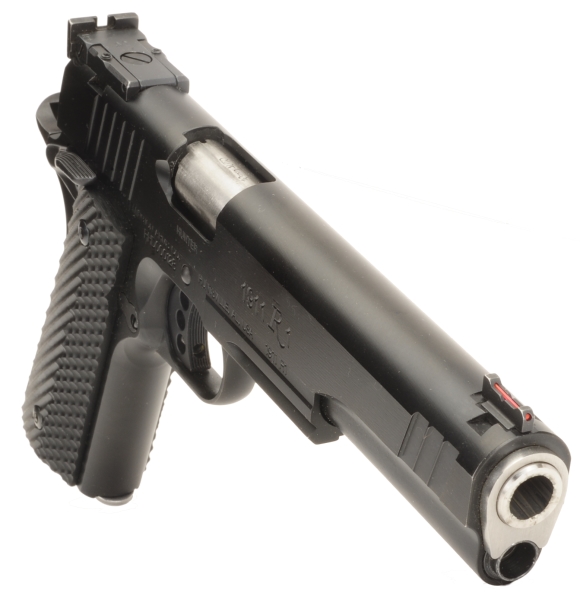
Email Notification